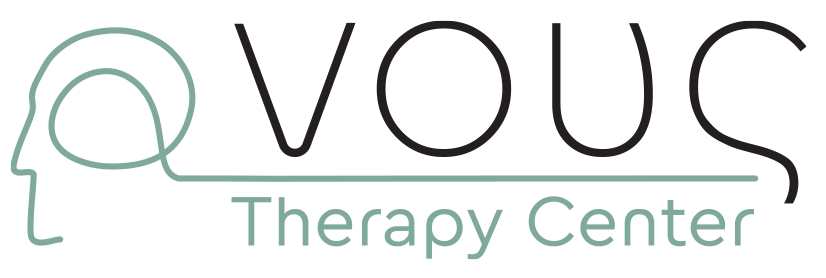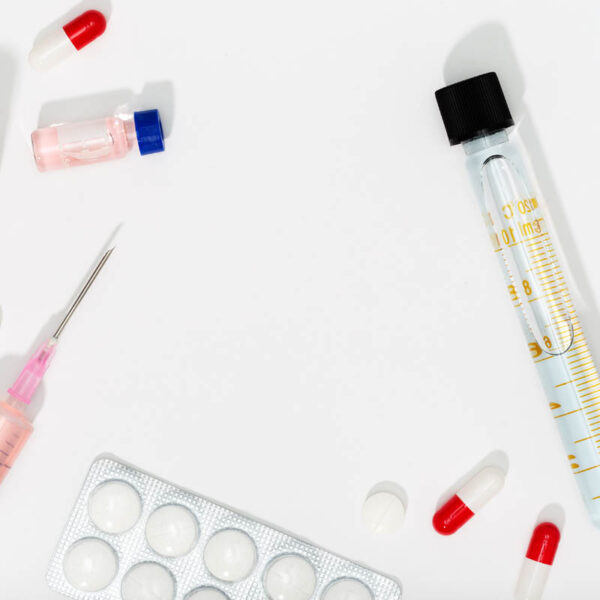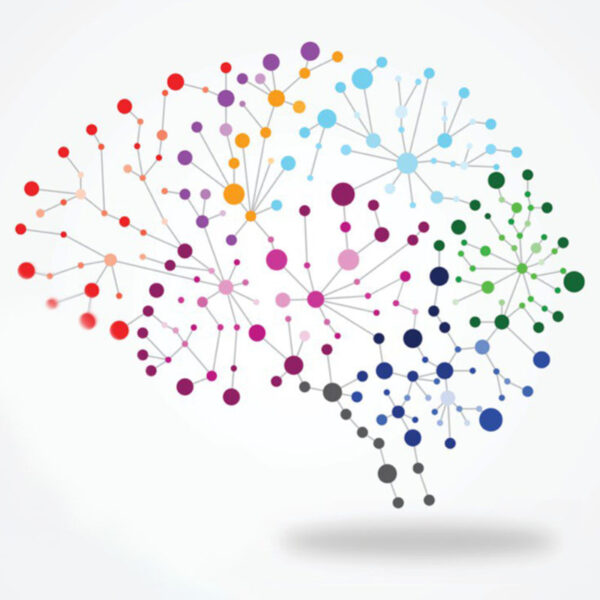
Obsessive-Compulsive Disorders (OCD)
Obsessive-Compulsive Disorder, or OCD, is characterized by recurrent, unwanted thoughts and behaviors that cause significant distress.
Obsessions, or obsessional thoughts, are repetitive and persistent thoughts, ideas, and images that provoke intense distress and anxiety. Often, they have repugnant, unwanted content, intrude into the person's consciousness, and may induce guilt or shame. The individual recognizes that these thoughts are products of their own mind, even though they arise involuntarily, and attempts to ignore, suppress, or neutralize them by employing other thoughts or actions.
Compulsions are repetitive behaviors, rituals, or acts, overt or covert, that the person feels compelled to perform to counteract the obsessions and the anxiety they generate. Although the actions are not realistically connected to what the person wants to avoid or control and are recognized as senseless or ineffective, they aim to reduce distress or prevent something bad from happening.
Some common obsessions include:
- Contamination fears, the belief that they will become contaminated by various substances or conditions.
- Checking, the need for repeated checks on locks, electrical appliances, doors, etc., out of fear that an accident or disaster will occur.
- Symmetry and precision, excessive concern for objects to be placed in a particular way.
- Fear of harm or danger to oneself or loved ones.
- Religious concerns, scruples, fear of angering God, or having unacceptable, immoral thoughts.
Similarly, the most common compulsions include:
- Cleaning/Washing.
- Performing acts or rituals in a specific order, number, or manner.
- Arranging objects.
- Repetitive counting, words, or phrases, including special prayers (mental compulsions).
It is essential to emphasize that individuals with OCD recognize that their obsessional thoughts are irrational or excessive. Nevertheless, they cannot ignore, control, or rid themselves of them.
Both obsessions and compulsions are extremely time-consuming, cause profound distress, and substantially interfere with individuals' functioning and daily lives.
The treatment of Obsessive-Compulsive Disorder may include both medication and psychotherapy, depending on the needs and severity of the individual's difficulties.
Obsessions, or obsessional thoughts, are repetitive and persistent thoughts, ideas, and images that provoke intense distress and anxiety. Often, they have repugnant, unwanted content, intrude into the person's consciousness, and may induce guilt or shame. The individual recognizes that these thoughts are products of their own mind, even though they arise involuntarily, and attempts to ignore, suppress, or neutralize them by employing other thoughts or actions.
Compulsions are repetitive behaviors, rituals, or acts, overt or covert, that the person feels compelled to perform to counteract the obsessions and the anxiety they generate. Although the actions are not realistically connected to what the person wants to avoid or control and are recognized as senseless or ineffective, they aim to reduce distress or prevent something bad from happening.
Some common obsessions include:
- Contamination fears, the belief that they will become contaminated by various substances or conditions.
- Checking, the need for repeated checks on locks, electrical appliances, doors, etc., out of fear that an accident or disaster will occur.
- Symmetry and precision, excessive concern for objects to be placed in a particular way.
- Fear of harm or danger to oneself or loved ones.
- Religious concerns, scruples, fear of angering God, or having unacceptable, immoral thoughts.
Similarly, the most common compulsions include:
- Cleaning/Washing.
- Performing acts or rituals in a specific order, number, or manner.
- Arranging objects.
- Repetitive counting, words, or phrases, including special prayers (mental compulsions).
It is essential to emphasize that individuals with OCD recognize that their obsessional thoughts are irrational or excessive. Nevertheless, they cannot ignore, control, or rid themselves of them.
Both obsessions and compulsions are extremely time-consuming, cause profound distress, and substantially interfere with individuals' functioning and daily lives.
The treatment of Obsessive-Compulsive Disorder may include both medication and psychotherapy, depending on the needs and severity of the individual's difficulties.
Body dysmorphic disorder involves the intense preoccupation of an individual with a perceived flaw in their external appearance, whether real or imagined. The anxiety and concern about this flaw are so overwhelming that they result in significant impairment in their functionality and lead to corresponding checking or compulsive behaviors.
Individuals with this disorder may spend hours each day in front of a mirror, inspecting the "flaw," often attempting to conceal it, and frequently comparing themselves to others or to their own appearance at a younger age. Many resort to interventions to correct the perceived flaw but remain unsatisfied. People with this specific disorder constantly experience negative thoughts about how much they dislike themselves and how different or better things would be without this flaw.
In such conditions, individuals experience intense discomfort, shame, and self-loathing, and they are likely to exhibit depressive thoughts and moods as well. Social events, both personal and professional, can also be challenging due to the shame associated with the disorder, impacting the formation of personal relationships.
Individuals with body dysmorphic disorder are often suspicious of others and are hypersensitive to their reactions, which is why they tend to have limited social lives and circles of acquaintances, often leading to isolation. It's important to emphasize that body dysmorphic disorder goes beyond seeking the correction of perceived imperfections one may have. It involves a persistent and obsessive need for alteration of characteristics that causes significant distress and inescapable unpleasant thoughts.
The primary therapeutic approach for this disorder is psychotherapy, with pharmacotherapy not excluded if deemed necessary for the relief or functionality of the individual.
Individuals with this disorder may spend hours each day in front of a mirror, inspecting the "flaw," often attempting to conceal it, and frequently comparing themselves to others or to their own appearance at a younger age. Many resort to interventions to correct the perceived flaw but remain unsatisfied. People with this specific disorder constantly experience negative thoughts about how much they dislike themselves and how different or better things would be without this flaw.
In such conditions, individuals experience intense discomfort, shame, and self-loathing, and they are likely to exhibit depressive thoughts and moods as well. Social events, both personal and professional, can also be challenging due to the shame associated with the disorder, impacting the formation of personal relationships.
Individuals with body dysmorphic disorder are often suspicious of others and are hypersensitive to their reactions, which is why they tend to have limited social lives and circles of acquaintances, often leading to isolation. It's important to emphasize that body dysmorphic disorder goes beyond seeking the correction of perceived imperfections one may have. It involves a persistent and obsessive need for alteration of characteristics that causes significant distress and inescapable unpleasant thoughts.
The primary therapeutic approach for this disorder is psychotherapy, with pharmacotherapy not excluded if deemed necessary for the relief or functionality of the individual.
As its name suggests, hoarding disorder is characterized by excessive acquisition of objects without practical or emotional value. Individuals with this disorder have difficulty parting with or discarding possessions because they feel the need to save them, resulting in the accumulation of extreme amounts of objects in their living spaces.
Unlike collecting, which is organized and purposeful, hoarding occurs impulsively, compulsively, and without any specific plan. The objects typically lack a particular theme or purpose, and the main characteristic is chaotic, disorganized clutter.
Key symptoms for diagnosing hoarding disorder include:
- Persistent, intense difficulty discarding or getting rid of possessions, regardless of their actual value (due to the anxiety caused by their disposal).
- The accumulation of objects and the chaotic overcrowding of living spaces, which may or may not be perceived as problematic by the individual experiencing the disorder.
- Intense anxiety, fear of contamination, neglect of hygiene, and various functional impairments in social, professional, or other significant areas of life, including maintaining a safe living environment for oneself and others.
In general, the tendency toward excessive acquisition of objects, while not a diagnostic criterion in itself, should be approached with caution. Additionally, a specific subtype of hoarding disorder involves the hoarding of animals. Hoarding disorder often coexists with other mental disorders and problems such as depression, anxiety disorders, attention-deficit/hyperactivity disorder (ADHD), or alcohol abuse.
The treatment of hoarding disorder may involve psychotherapy and, in some cases, pharmacological intervention, depending on the individual's needs and the level of support required.
Unlike collecting, which is organized and purposeful, hoarding occurs impulsively, compulsively, and without any specific plan. The objects typically lack a particular theme or purpose, and the main characteristic is chaotic, disorganized clutter.
Key symptoms for diagnosing hoarding disorder include:
- Persistent, intense difficulty discarding or getting rid of possessions, regardless of their actual value (due to the anxiety caused by their disposal).
- The accumulation of objects and the chaotic overcrowding of living spaces, which may or may not be perceived as problematic by the individual experiencing the disorder.
- Intense anxiety, fear of contamination, neglect of hygiene, and various functional impairments in social, professional, or other significant areas of life, including maintaining a safe living environment for oneself and others.
In general, the tendency toward excessive acquisition of objects, while not a diagnostic criterion in itself, should be approached with caution. Additionally, a specific subtype of hoarding disorder involves the hoarding of animals. Hoarding disorder often coexists with other mental disorders and problems such as depression, anxiety disorders, attention-deficit/hyperactivity disorder (ADHD), or alcohol abuse.
The treatment of hoarding disorder may involve psychotherapy and, in some cases, pharmacological intervention, depending on the individual's needs and the level of support required.
Trichotillomania is described as the repeated pulling out of hair from various parts of the body, resulting in noticeable hair loss. This hair-pulling can occur consciously or unconsciously, and individuals often attempt to reduce or stop the behavior but are unable to do so.
It is a mental disorder that typically begins in childhood or adolescence and is often associated, especially in children and adolescents, with trichophagia, the compulsive consumption of the pulled-out hair. Hair-pulling may serve various purposes, such as helping the individual cope with unpleasant emotions, relieving stress, or providing sensory satisfaction through the act of pulling hair.
In both children and adults, trichotillomania causes significant distress and impairs functioning in various areas of life. Individuals affected by this disorder may not recognize that they have a problem, yet they spend a considerable amount of time pulling out hair and concealing areas where hair has been removed, often feeling embarrassment, shame, or disgust toward themselves.
The manifestation of this behavior and its consequences can lead to social and occupational isolation. Frequently, it gives rise to feelings of anxiety, depression, and difficulties in interpersonal relationships. Additionally, hair-pulling can lead to skin irritation, infections, and, in cases of trichophagia, severe gastrointestinal problems.
The treatment of trichotillomania may include psychotherapy and pharmacological interventions, depending on the severity of symptoms and individual needs. In children, the primary therapeutic approach is typically psychotherapy.
It is a mental disorder that typically begins in childhood or adolescence and is often associated, especially in children and adolescents, with trichophagia, the compulsive consumption of the pulled-out hair. Hair-pulling may serve various purposes, such as helping the individual cope with unpleasant emotions, relieving stress, or providing sensory satisfaction through the act of pulling hair.
In both children and adults, trichotillomania causes significant distress and impairs functioning in various areas of life. Individuals affected by this disorder may not recognize that they have a problem, yet they spend a considerable amount of time pulling out hair and concealing areas where hair has been removed, often feeling embarrassment, shame, or disgust toward themselves.
The manifestation of this behavior and its consequences can lead to social and occupational isolation. Frequently, it gives rise to feelings of anxiety, depression, and difficulties in interpersonal relationships. Additionally, hair-pulling can lead to skin irritation, infections, and, in cases of trichophagia, severe gastrointestinal problems.
The treatment of trichotillomania may include psychotherapy and pharmacological interventions, depending on the severity of symptoms and individual needs. In children, the primary therapeutic approach is typically psychotherapy.
Excoriation Disorder, also known as Skin-Picking Disorder, is a relatively new addition to the group of obsessive-compulsive disorders. It involves the repetitive and persistent picking, scratching, or pulling of the skin. Individuals engage in this behavior without control, resulting in skin lesions, wounds, or infections. They have repeatedly tried, unsuccessfully, to reduce or stop this harmful behavior.
Similar to other obsessive-compulsive disorders, skin picking can be a habit that serves as a way to alleviate anxiety, provide relaxation, or offer a sense of satisfaction. It can occur both voluntarily, such as in front of a mirror, and involuntarily, for example, when an individual is relaxed or watching television, without them being aware of it. Many individuals affected by this disorder pick at acne on their face or other parts of their body, and it is common for them to bite or dig at the skin around their fingernails.
Like in other obsessive-compulsive disorders, individuals with excoriation disorder spend a significant amount of time each day engaged in skin picking or related thoughts and in attempts to resist the urge. This disorder triggers feelings of anxiety, sadness, guilt, and unworthiness, as individuals feel powerless and unable to stop, despite their desire to do so.
In many cases, excoriation disorder begins during adolescence and is often associated with the onset of acne. Therefore, it is crucial, especially when the symptoms are solely related to adult or adolescent acne, to seek treatment for this condition, as reducing or ceasing the picking is possible.
In any case, excoriation disorder represents a particularly distressing and uncomfortable condition that has significant consequences across multiple aspects of daily life and an individual's functioning. Treatment typically includes psychotherapy and may involve pharmacological interventions, depending on the severity of the disorder and individual needs.
Similar to other obsessive-compulsive disorders, skin picking can be a habit that serves as a way to alleviate anxiety, provide relaxation, or offer a sense of satisfaction. It can occur both voluntarily, such as in front of a mirror, and involuntarily, for example, when an individual is relaxed or watching television, without them being aware of it. Many individuals affected by this disorder pick at acne on their face or other parts of their body, and it is common for them to bite or dig at the skin around their fingernails.
Like in other obsessive-compulsive disorders, individuals with excoriation disorder spend a significant amount of time each day engaged in skin picking or related thoughts and in attempts to resist the urge. This disorder triggers feelings of anxiety, sadness, guilt, and unworthiness, as individuals feel powerless and unable to stop, despite their desire to do so.
In many cases, excoriation disorder begins during adolescence and is often associated with the onset of acne. Therefore, it is crucial, especially when the symptoms are solely related to adult or adolescent acne, to seek treatment for this condition, as reducing or ceasing the picking is possible.
In any case, excoriation disorder represents a particularly distressing and uncomfortable condition that has significant consequences across multiple aspects of daily life and an individual's functioning. Treatment typically includes psychotherapy and may involve pharmacological interventions, depending on the severity of the disorder and individual needs.
Make an Appointment
If you experience the above symptoms, do not hesitate to contact us. The NOYS Therapy Center team is here for you.










